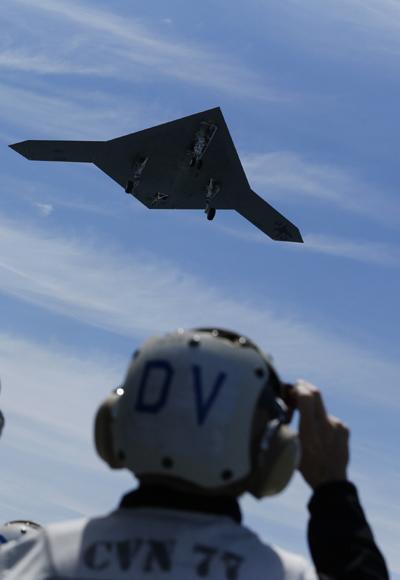
United States Attorney General Eric Holder's recent admission that the government killed four Americans in different drone strikes in Yemen and Pakistan has brought the debate over the killing birds back to the fore.
US President Barack Obama on Thursday defended the use of drones, saying the drones "have saved lives" by eliminating terrorists, and are a legal part of a "just war" against terror outfits.
These unmanned drones, used both for reconnaissance and attack operations across the world, have been lauded by some as the cornerstone of 21st century warfare. At the same time the violence it has unleashed has sparked extreme condemnation in some quarters of the world, especially 'drone victims' Afghanistan and Pakistan.
We present some recent and archival Reuters images of unmanned drone being developed across the globe.
In this photograph, an X-47B pilot-less drone combat aircraft is seen launching for the first time off an aircraft carrier, the USS George H. W. Bush, in the Atlantic Ocean off the coast of Virginia.
The U.S. Navy had made aviation history by catapulting an unmanned jet off an aircraft carrier for the first time, testing a long-range, stealthy, bat-winged plane that represents a jump forward in drone technology.
Click on NEXT for more...

Click on NEXT for more...

Click on NEXT for more...
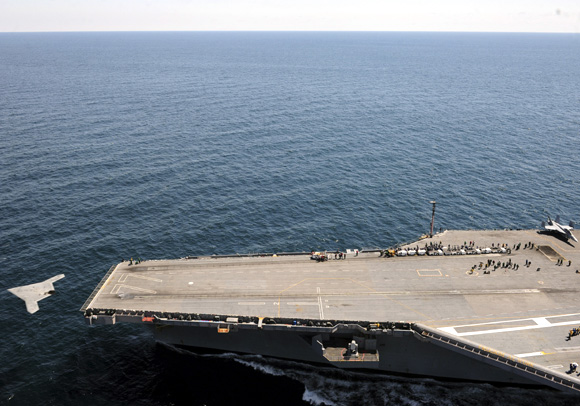
An X-47B Unmanned Combat Air System (UCAS) demonstrator launches from the flight deck of the aircraft carrier USS George H.W. Bush off the coast of Virginia.
Click on NEXT for more...

Click on NEXT for more...
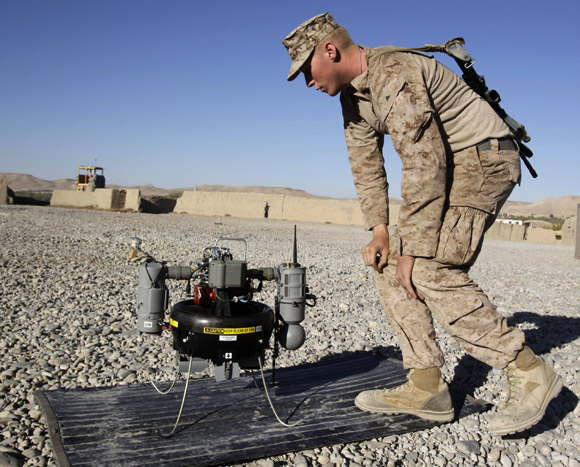
Click on NEXT for more...
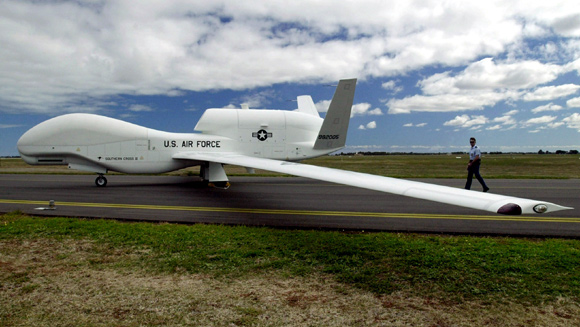
Click on NEXT for more...
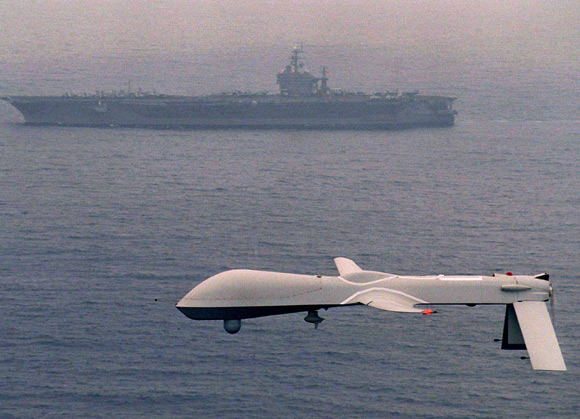
A Predator unmanned aerial vehicle flies above USS Carl Vinson in this December 5, 1995 file photo.
Click on NEXT for more...

Click on NEXT for more...

Click on NEXT for more...
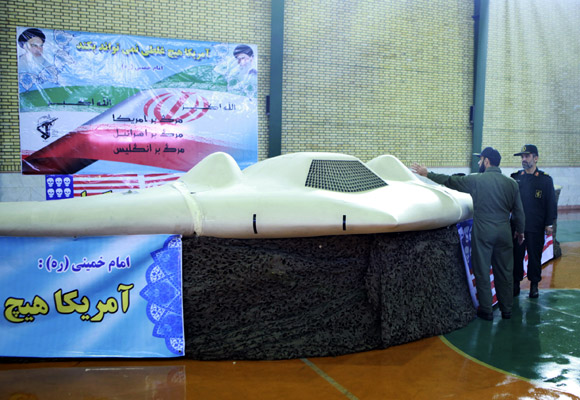
An undated picture received December 8, 2011 shows a member of Iran's revolutionary guard pointing at the U.S. RQ-170 unmanned spy plane as he speaks with Amirali Hajizadeh (R), a revolutionary guard commander, at an unknown location in Iran.
The unmanned U.S. drone, Iran said it had captured, was programmed to automatically return to base even if its data link was lost, one key reason that U.S. officials say the drone likely malfunctioned and was not downed by Iranian electronic warfare.
Click on NEXT for more...
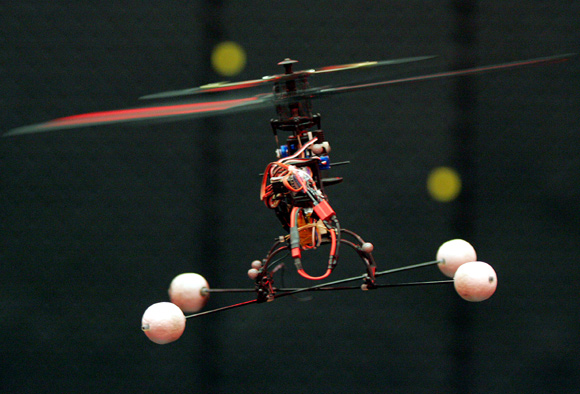
A computer controlled U.S. Air Force drone during a test flight in the Micro Air Vehicle lab at Wright Patterson Air Force Base in Dayton, Ohio, July 11, 2011.
The Micro Air Vehicles unit of the Air Force Research Laboratory at Wright Patterson AFB was developing small military drones, with the goal of making them so small that they resemble small birds and insects, including some that will have moving wings. The mission is to develop MAVs that can find, track and target adversaries while operating in complex urban environments.
The engineers are using a variety of small helicopters and drones in the lab to develop the programs and software. Testing takes place in a controlled indoor lab where the team flies the MAVs and then gathers data to analyse for further development.
Click on NEXT for more...

Click on NEXT for more...

The RQ-4A Global Hawk, a high-altitude, long-endurance unmanned aerial reconnaissance system designed to provide military field commanders with high resolution, near-real-time imagery of large geographic areas is pictured at a forward deployed location. Picture released July 21,
Click on NEXT for more...
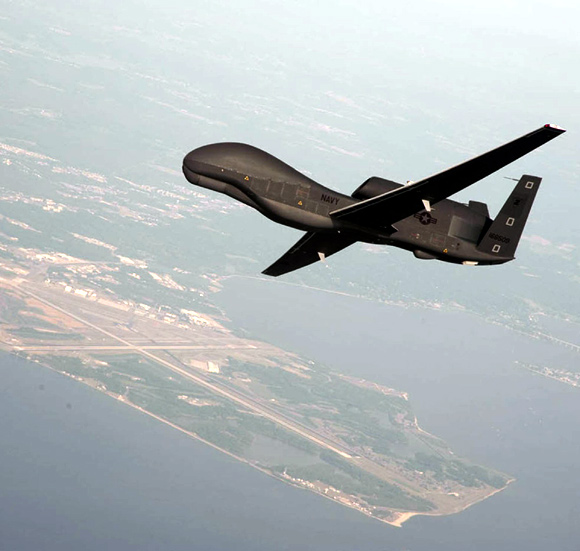
Undated file photo courtesy of the U.S. Navy shows a RQ-4 Global Hawk unmanned aerial vehicle conducting tests over Naval Air Station Patuxent River, Maryland.
Click on NEXT for more...

Click on NEXT for more...
...